A playoff team for seven straight years from 2014-20, the Raptors won just 27 games in 2020/21 while playing their home games in Tampa due to COVID-related border restrictions, then got some lottery luck that spring, landing the No. 4 pick and nabbing Scottie Barnes.
When Toronto racked up 48 wins in 2021/22, it looked like that lost ’20/21 season would just be a blip on the radar, with the club poised to reclaim its place as a playoff fixture in the East. So it came as a major disappointment when the Raptors went just 41-41 in ’22/23, their worst record in a non-Tampa season since 2012/13, and were quickly eliminated from the play-in tournament.
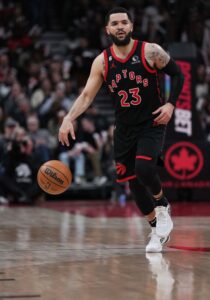 On paper, the Raptors looked like a team that should have finished better than .500. Pascal Siakam and Fred VanVleet have All-Star appearances on their résumés and are still in their prime. Barnes was coming off a Rookie of the Year campaign. OG Anunoby and Gary Trent Jr. are the types of three-and-D players that every NBA team covets. And Toronto even addressed its hole in the middle by reacquiring Jakob Poeltl from San Antonio in February.
On paper, the Raptors looked like a team that should have finished better than .500. Pascal Siakam and Fred VanVleet have All-Star appearances on their résumés and are still in their prime. Barnes was coming off a Rookie of the Year campaign. OG Anunoby and Gary Trent Jr. are the types of three-and-D players that every NBA team covets. And Toronto even addressed its hole in the middle by reacquiring Jakob Poeltl from San Antonio in February.
The individuals were better than the sum of the parts though, and a thin, inconsistent bench that lost Otto Porter to a foot injury early in the season didn’t help matters. Heading into the 2023 offseason, top executives Masai Ujiri and Bobby Webster will have to determine which players are still considered long-term cornerstones and which might be expendable in trades to breathe new life into the roster.
The Raptors’ Offseason Plan:
Before the Raptors make any player personnel decisions, they’ll have to determine who will be coaching the team this fall. Nick Nurse, an assistant on Dwane Casey‘s staff until 2018, won a championship in 2019 in his first year as head coach, then was named Coach of the Year in 2020. But his last few years were more of a mixed bag, with Nurse leaning too heavily on his starters and perhaps not connecting with his players in the same way he once did. The club parted ways with him last month.
Toronto’s list of interviewees is longer than that of any other team conducting a head coaching search this spring, with the team casting a wide net in its search for Nurse’s replacement. In addition to former NBA head coaches and current assistants, that list includes a EuroLeague coach (Sergio Scariolo), a WNBA coach (Becky Hammon), and a player-turned-TV-analyst (JJ Redick).
It’s hard to draw any conclusions about the Raptors’ search until we see how it ends, but the team at least seems willing to get creative and think outside the box as it seeks its new leader on the sidelines. It will be interesting to see whether Toronto’s eventual choice is one of those outside-the-box candidates or if the club will ultimately play it safe with a former NBA coach or experienced assistant.
As important as the head coaching decision is, it will be quickly overshadowed by the looming free agency of three key contributors. Poeltl is headed for unrestricted free agency, while VanVleet and Trent can join him if they decline player options for 2023/24, which is expected.
On paper, there’s a strong case to bring back all three players. Of the three, Poeltl looks like the best bet to return — Toronto gave up its top-six protected 2024 first-round pick for the veteran center and he capably filled a position that had been a revolving door since the club parted with Marc Gasol and Serge Ibaka in 2020. It wouldn’t make sense for the Raptors to let him walk, so I expect him to re-sign on a three- or four-year deal worth in the neighborhood of $17-20MM annually.
VanVleet and Trent are trickier cases. VanVleet is a strong defender who was a career 38.2% three-point shooter entering 2022/23, but he wasn’t quite as stout defensively this past season, and his three-point rate dipped to 34.2%.
In theory, the 29-year-old provides the sort of floor spacing and play-making that the Raptors don’t get from many other players on the roster, and he has proven his bona fides in the postseason, playing a rotation role on the championship team in 2019. But VanVleet isn’t particularly efficient from inside the arc and his price tag could approach or even surpass $30MM per year.
Trent, meanwhile, is probably in line for a multiyear contract worth in excess of $20MM annually, given his age (24), as well as his ability to knock down outside shots (.384 career 3PT%) and hold his own on defense. That’s a fair rate, and his skill set is one the Raptors could use, but it’s a substantial price to pay for a player who projects to be a sixth man.
It’s not out of the question for the Raptors to pay Poeltl, VanVleet, and Trent and still sneak below the luxury tax line in 2023/24. But it might require some cost-cutting elsewhere on the roster, with Chris Boucher ($11.75MM) and Porter ($6.3MM) among the potential trade candidates. Boucher and Porter theoretically project to be two of Toronto’s top bench players next season, so it would be a challenge to sign all three free agents, trade Boucher and/or Porter, and find a way to upgrade the second unit.
Of course, one possibility we haven’t discussed yet is the idea of trading a core player. Barnes, 21, probably isn’t going anywhere. A sign-and-trade involving VanVleet or Trent wouldn’t be impossible. But Siakam and Anunoby – who was one of the top trade candidates to stay put at February’s deadline – would be easier to move and are more likely to be the subject of trade rumors this summer.
Of those two, Anunoby is the better bet to be on the move. His cap hit ($18.6MM) is less than half of Siakam’s, which simplifies salary matching, and he’s the player who can slot more easily into any team’s lineup due to his three-and-D skill set. The 25-year-old still hasn’t fully come into his own as an offensive creator, but he has made 38.4% of his three-pointers over the last four seasons and has become one of the NBA’s best, most versatile defenders, with an ability to guard point guards, centers, and anything in between.
Siakam is a talented two-way player in his own right, with a more well-rounded offensive game and impressive versatility on defense. However, he’s more ball-dominant and is quite pricey ($37.9MM), so the list of teams that could conceivably trade for him and then seamlessly incorporate him would be shorter.
Much of the trade speculation surrounding Anunoby has been centered on how many first-round picks Toronto could get back for him, but the Raptors – who don’t control their 2024 first-rounder – have no incentive to load up on draft picks and rebuild.
If Anunoby or another key player is traded, the front office’s goal will likely be to get back multiple young players who are ready to step into rotation roles. For instance, if the Pelicans pursue Anunoby, I’d expect the Raptors to show more interest in the likes of Dyson Daniels, Trey Murphy, Herbert Jones, and Jose Alvarado than in New Orleans’ collection of future first-round picks.
Toronto will certainly be open to retooling the roster, but blowing it up probably isn’t on the table this offseason.
Salary Cap Situation
Guaranteed Salary
 Pascal Siakam ($37,893,408)
Pascal Siakam ($37,893,408)- OG Anunoby ($18,642,857)
- Chris Boucher ($11,750,000)
- Scottie Barnes ($8,008,680)
- Otto Porter Jr. ($6,300,000)
- Precious Achiuwa ($4,379,527)
- Malachi Flynn ($3,873,025)
- Christian Koloko ($1,719,864)
- Thaddeus Young ($1,000,000)
- Note: Partial guarantee. Rest of salary noted below.
- Total: $93,567,361
Dead/Retained Salary
Player Options
Team Options
Non-Guaranteed Salary
- Thaddeus Young ($7,000,000)
- Note: Partial guarantee. Young’s salary would become fully guaranteed if he’s not waived on or before June 30.
- Joe Wieskamp ($1,927,896)
- Note: Wieskamp’s salary would become fully guaranteed if he’s not waived on or before June 30.
- Total: $8,927,896
Restricted Free Agents
Two-Way Free Agents
Draft Picks
- No. 13 overall ($4,469,280)
- Note: This is only a placeholder until the draft order is determined via the lottery.
- Total: $4,469,280
Extension-Eligible Players
- OG Anunoby (veteran)
- Jakob Poeltl (veteran)
- Pascal Siakam (veteran)
- Gary Trent Jr. (veteran)
- Fred VanVleet (veteran)
- Precious Achiuwa (rookie scale)
- Malachi Flynn (rookie scale)
Note: These are players who are either already eligible for an extension or will become eligible before the 2023/24 season begins. Poeltl is only eligible until June 30; Trent would only become eligible if his player option is exercised.
Unrestricted Free Agents / Other Cap Holds
Cap Exceptions Available
- Mid-level exception: $12,220,600
- Bi-annual exception: $4,448,000
Note: The Raptors would lose access to the full mid-level exception and the bi-annual exception if their team salary surpasses the tax apron.
 On paper, the Raptors looked like a team that should have finished better than .500.
On paper, the Raptors looked like a team that should have finished better than .500. 
 Indiana only has five free agents (including both two-way players) entering the offseason, and president of basketball operations Kevin Pritchard has already said that the team’s interest in bringing back
Indiana only has five free agents (including both two-way players) entering the offseason, and president of basketball operations Kevin Pritchard has already said that the team’s interest in bringing back 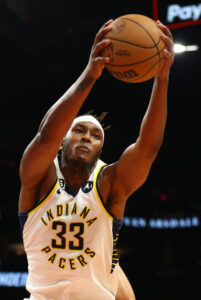
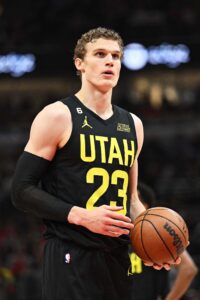 But it was
But it was 
 No cap hold can exceed the maximum salary for which a player can sign. For example, the cap hold for a Bird player with a salary above the league average is generally 150% of his previous salary, as noted above. But for someone like Mavericks star
No cap hold can exceed the maximum salary for which a player can sign. For example, the cap hold for a Bird player with a salary above the league average is generally 150% of his previous salary, as noted above. But for someone like Mavericks star 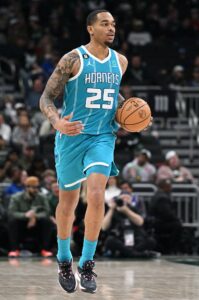 Unfortunately, the Hornets took a major step back this season from a win/loss perspective, going 27-55. Injuries to players up and down the roster certainly played a part in that decline, with only
Unfortunately, the Hornets took a major step back this season from a win/loss perspective, going 27-55. Injuries to players up and down the roster certainly played a part in that decline, with only 
 I don’t think the idea of trading Green should be entirely dismissed, but I’d be surprised if he’s moved. He’s still only 21 years old and has two years left on his rookie contract. Sure, he’s struggled with scoring efficiency and defense, but those are normal growing pains for a young player, and it’s not like the Rockets had a strong foundation on either end of the court.
I don’t think the idea of trading Green should be entirely dismissed, but I’d be surprised if he’s moved. He’s still only 21 years old and has two years left on his rookie contract. Sure, he’s struggled with scoring efficiency and defense, but those are normal growing pains for a young player, and it’s not like the Rockets had a strong foundation on either end of the court.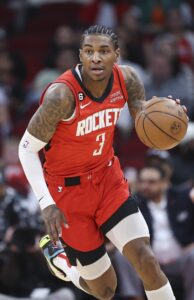
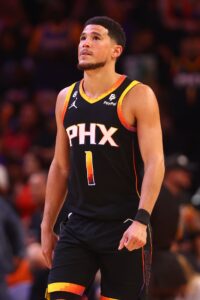 The figures above explain why
The figures above explain why